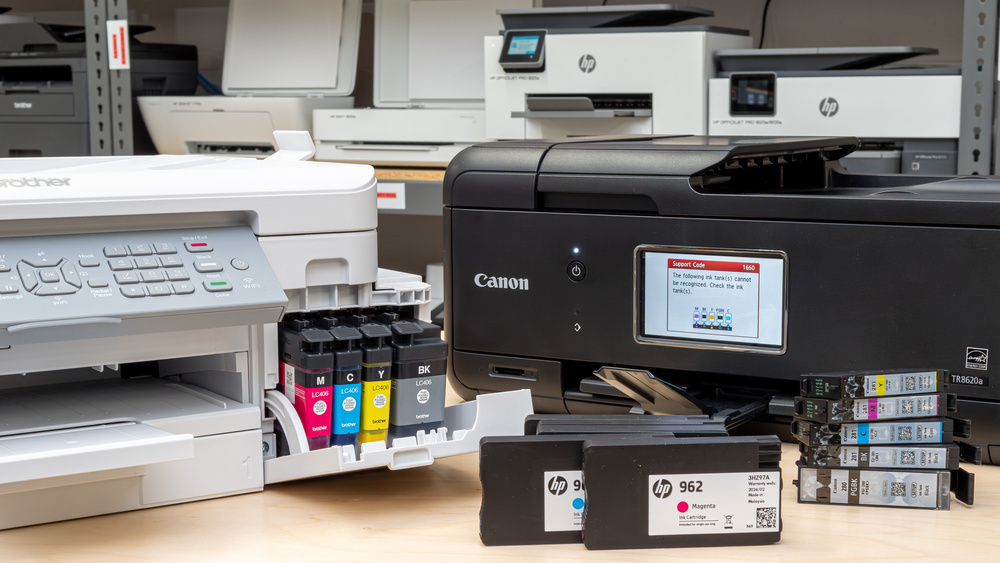Inkjet printers have revolutionized the world of printing since their introduction in the late 20th century. Their development marked a significant shift from traditional printing methods, offering a more accessible and versatile means of producing high-quality prints. Today, inkjet printers are ubiquitous in homes, offices, and industries, thanks to their affordability, efficiency, and ability to handle a wide range of printing tasks Alpha Coding.
Origins and Development
The concept of inkjet printing can be traced back to the 1950s, but it wasn’t until the 1970s and 1980s that the technology began to mature and gain commercial traction. The first practical inkjet printer, the HP ThinkJet, was introduced by Hewlett-Packard in 1984. This innovation utilized thermal inkjet technology, where tiny resistors create heat to vaporize ink, forming bubbles that are expelled through nozzles onto the paper.
Around the same time, Canon developed its own thermal inkjet technology, and Epson introduced piezoelectric inkjet technology, which uses piezoelectric crystals to force ink out of the nozzles. These technological advancements laid the groundwork for the widespread adoption of inkjet printers.
How Inkjet Printers Work
Inkjet printers operate by propelling droplets of ink onto paper to create an image or text. The process involves several key components:
- Print Head: The core of the inkjet printer, the print head contains numerous microscopic nozzles that spray ink onto the paper. The precision of these nozzles determines the quality and resolution of the print.
- Ink Cartridges: These containers hold the ink used by the printer. Inkjet printers typically use separate cartridges for black and color inks, allowing for efficient use and easy replacement.
- Paper Feed: This mechanism moves the paper through the printer, ensuring that the print head can cover the entire surface of the paper.
- Control System: Modern inkjet printers are equipped with sophisticated control systems that manage the movement of the print head and paper feed, ensuring accurate and high-quality prints.
Advantages of Inkjet Printers
Inkjet printers offer several advantages that have contributed to their popularity:
- High Quality: Inkjet printers are capable of producing high-resolution prints with rich colors and fine details, making them ideal for both text and image printing.
- Versatility: These printers can handle a variety of media, including standard paper, photo paper, labels, and even fabrics, making them suitable for diverse applications.
- Affordability: Compared to other printing technologies, such as laser printers, inkjet printers are often more affordable, both in terms of initial purchase price and maintenance costs.
- Compact Size: Inkjet printers are generally more compact than their laser counterparts, making them a convenient choice for home and small office environments.
Applications of Inkjet Printing
The versatility of inkjet printers has led to their use in a wide range of applications:
- Home and Office Printing: Inkjet printers are commonly used for everyday printing tasks, including documents, photos, and presentations.
- Professional Photography: High-end inkjet printers are capable of producing gallery-quality photo prints, favored by professional photographers and artists.
- Industrial Printing: In industries such as packaging, textiles, and electronics, inkjet printers are used for printing barcodes, labels, and intricate patterns on various materials.
- 3D Printing: Advanced inkjet technology has been adapted for use in 3D printing, where layers of material are deposited to create three-dimensional objects.
The Future of Inkjet Printing
As technology continues to evolve, inkjet printers are expected to become even more efficient and versatile. Innovations such as high-speed printing, improved ink formulations, and enhanced print head technologies are on the horizon, promising to further expand the capabilities and applications of inkjet printing.
Additionally, the growing emphasis on sustainability is driving the development of eco-friendly inks and recyclable printing materials, ensuring that inkjet printing remains a viable and responsible choice for the future.
